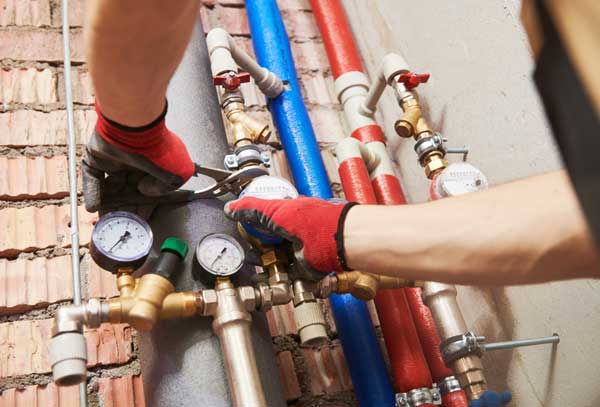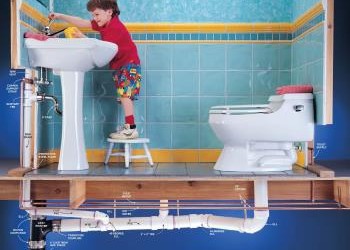Maintaining Your New Home's Bathroom Plumbing: Key Tips
Maintaining Your New Home's Bathroom Plumbing: Key Tips
Blog Article
They are making a few great points related to Essential DIY Bathroom Plumbing Tips Every Homeowner in general in this content down below.

For new property owners, understanding and maintaining restroom pipes can save both money and time by protecting against pricey problems down the line. Here are some necessary restroom plumbing ideas to aid you keep every little thing running smoothly.
Familiarize Yourself with the Key Shut-Off Shutoff
Knowing where the main water shut-off valve is located in your home is crucial. This enables you to quickly turn off the water supply in case of major leaks or throughout pipes emergency situations, stopping comprehensive water damage.
Regularly Check for Leakages
Tiny leaks can cause huge troubles. Routinely examine under sinks, around toilets, and near plumbing components for any indications of leaks. Search for moisture, little drips, or rust. Capturing and fixing leaks early can stop much more serious damage and conserve water.
Don't Overlook Slow Drains Pipes
If your sink or tub is draining gradually, it's usually a sign of a clog creating. Addressing this very early can prevent a full obstruction. Make use of a bettor or a plumbing technician's snake to clear out debris. Avoid making use of chemical drainpipe cleansers as they can damage your pipes with time.
Know What Not to Flush
Bathrooms are not waste disposal unit. Stay clear of flushing anything other than toilet tissue and human waste. Products like wipes, womanly hygiene products, and cotton swabs ought to be thrown away in the trash to stop clogs and sewer backups.
Mount Strainers in Drains
Area strainers in your sink and tub drains pipes to capture hair and other debris before they enter your plumbing system. Cleaning the filters consistently will aid protect against buildup and maintain water streaming freely.
Maintain Your Water Heater
Guarantee your hot water heater is set to a proper temperature (generally about 120 degrees Fahrenheit) to avoid hot and minimize energy usage. Flush the tank every year to eliminate debris build-up, which can minimize the performance and lifespan of your heating system.
Update Your Fixtures
If your home has older components, consider updating to a lot more effective models. Modern commodes, showerheads, and taps are created to utilize much less water while offering excellent pressure, which can significantly lower your water bill and environmental impact.
Be Cautious with DIY Plumbing Repair Works
While it's tempting to handle all home repairs by yourself, beware with pipes. Some concerns could call for expert expertise, specifically if they entail main water lines or drain repair services. Hiring a professional can occasionally be extra cost-efficient than DIY, specifically if it protects against more damage.
Plan For Cold Weather
Protect your pipelines from freezing throughout winter by protecting pipelines in unheated areas like cellars, attic rooms, and garages. During severe cool, allow cold water drip from faucets served by revealed pipes to aid stop freezing.
Arrange Normal Maintenance
Consider organizing annual assessments with an accredited plumbing. They can detect problems that you may miss out on, such as covert leaks or wear and tear on pipes and fixtures. Normal maintenance helps prolong the life of your pipes system and can prevent emergency situations.
Final thought
Understanding and maintaining your home's restroom pipes can protect against numerous usual problems. By adhering to these important suggestions, you can guarantee your restroom continues to be useful and reliable, conserving you time and money over time.
Essential Plumbing Tips for Homeowners: Keep Your Pipes Flowing Smoothly
As a homeowner, understanding the basics of your plumbing system can save you time, money, and a lot of headaches. Plumbing issues can range from minor annoyances like dripping faucets to major problems like burst pipes that cause significant damage. This guide provides essential tips to help you maintain your plumbing system and tackle common issues.
Understanding Your Plumbing System
Supply System: Brings fresh water into your home from a municipal source or a well. Drain-Waste-Vent System: Removes wastewater and vents sewer gases outside. Fixtures and Appliances: Includes sinks, toilets, showers, dishwashers, and washing machines. Basic Maintenance Tips
Regular Inspections: Periodically check for leaks, corrosion, and other signs of wear and tear. Look under sinks, around toilets, and near water heaters. Know Your Main Shut-Off Valve: In case of a major leak, you’ll need to shut off the water quickly. Ensure everyone in your household knows where the main shut-off valve is located. Prevent Frozen Pipes: In cold climates, insulate exposed pipes and let faucets drip during extreme cold to prevent freezing. Use Strainers: Install strainers in sinks and tubs to catch hair, food particles, and other debris that can cause clogs. Common Plumbing Issues and Solutions
Clogged Drains:
Prevention: Avoid pouring grease down the drain and use drain screens to catch debris. DIY Fix: Use a plunger or a plumbing snake to clear minor clogs. For stubborn clogs, a mixture of baking soda and vinegar can sometimes help. Leaky Faucets:
Prevention: Replace washers and seals regularly. DIY Fix: Turn off the water supply, disassemble the faucet, and replace worn parts.

Click Here Report this page